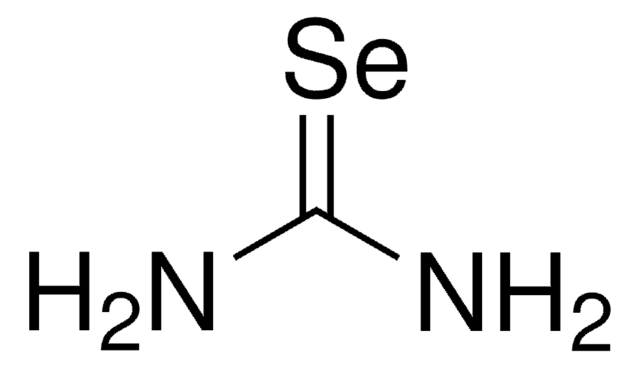M6680
Se-(Methyl)selenocysteine hydrochloride
≥95% (TLC)
About This Item
Recommended Products
Assay
≥95% (TLC)
storage temp.
−20°C
SMILES string
Cl.C[Se]C[C@H](N)C(O)=O
InChI
1S/C4H9NO2Se.ClH/c1-8-2-3(5)4(6)7;/h3H,2,5H2,1H3,(H,6,7);1H/t3-;/m0./s1
InChI key
JMPVTFHGWJDSDV-DFWYDOINSA-N
General description
Application
Biochem/physiol Actions
Signal Word
Danger
Hazard Statements
Precautionary Statements
Hazard Classifications
Acute Tox. 3 Inhalation - Acute Tox. 3 Oral - Aquatic Acute 1 - Aquatic Chronic 1 - STOT RE 2
Storage Class Code
6.1A - Combustible acute toxic Cat. 1 and 2 / very toxic hazardous materials
WGK
WGK 3
Flash Point(F)
Not applicable
Flash Point(C)
Not applicable
Certificates of Analysis (COA)
Search for Certificates of Analysis (COA) by entering the products Lot/Batch Number. Lot and Batch Numbers can be found on a product’s label following the words ‘Lot’ or ‘Batch’.
Already Own This Product?
Find documentation for the products that you have recently purchased in the Document Library.
Customers Also Viewed
Articles
Antioxidants protect biological systems from oxidative damage produced by oxygen-containing free radicals and from redoxactive transition metal ions such as iron, copper, and cadmium.
Chromatograms
application for HPLCOur team of scientists has experience in all areas of research including Life Science, Material Science, Chemical Synthesis, Chromatography, Analytical and many others.
Contact Technical Service












